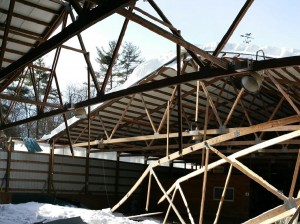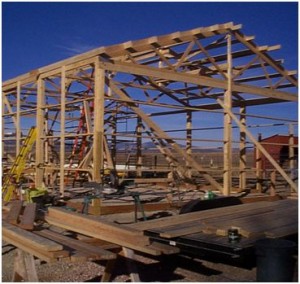Information for this article includes contributions from a recent article by Val Van Meter in The Winchester Star.
“With snow melting from the record-breaking winter storm, Clarke County is collecting information on the damage it has left behind.

At that time, the information will be sent to the Virginia Department of Emergency Management. The state will use damage reports to determine what is eligible for federal assistance.
“We have had some expenses,” Ash said about the county. “We’ll see if we qualify.”
Meanwhile, Virginia Cooperative Extension agent Corey Childs has been cataloging agricultural damage in Clarke.
Childs said his office has a “first look” at what the heavy weight of snow destroyed.
In Clarke County, he said, there is a report of a dairy farm feeding-floor structure collapsing under the weight of more than 30 inches of snow.
A pole barn that sheltered cattle also came down, Childs said, but the animals escaped unharmed.
Another pole barn, used for hay storage, caved in, and two horse barns collapsed.”
There are several reasons why these buildings may have collapsed (yes, Captain Obvious – it was from snow loads)….
The most likely is these were older buildings, built prior to current Building Code editions which address more realistically climactic forces and how they are applied to structures.
Or,
Due to an agricultural use exemption, they may have been exempted from the structural requirements of the Building Code, rather like Oregon does: https://www.hansenpolebuildings.com/2013/09/agricultural-exemption/
In the following few months, it may prove helpful for the Building Officials to do a review of their snow load requirements. Granted, this very well may have been the once in 50 year storm which is outside of the probabilities the Code is written for, but then again, maybe it isn’t.
Here is how snow load can be determined, based upon depth (along with some wind information): https://www.hansenpolebuildings.com/calculating-loads/








